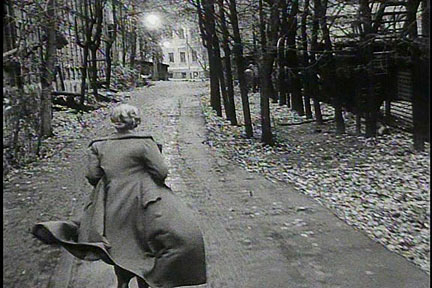ANDREI RUBLEV (ANDREY RUBLYOV) (Andrei Tarkovsky, 1966)
Film Society of Lincoln Center, Walter Reade Theater
144 West 65th St. between Eighth Ave. & Broadway
August 24-30
212-875-5050
www.filmlinc.org
 In May 2017, the Film Society of Lincoln Center’s exclusive presentation of the Mosfilm 2K digital restoration of Andrei Tarkovsky’s 1979 sci-fi masterpiece, Stalker, broke the opening-weekend box-office record at the arts institution. That was followed the same month by the digital restoration of Tarkovsky’s 1972 Solaris. Next up from Mosfilm and Janus is a restoration of Tarkovsky’s preferred 183-minute version of his epic Andrei Rublev, which arrives August 24 for a one-week Revival Run at the Walter Reade Theater. In 1966, Soviet auteur Tarkovsky followed up his dazzling debut, Ivan’s Childhood, with Andrei Rublev, a quietly powerful tale of a monk and icon painter making his way through early fifteenth-century Russia. But it is much more than a historical, biographical look at the real-life figure during the creation of tsarist Russia. “I knew it would certainly not be a historical or biographical work,” Tarkovsky wrote in his 1986 book Sculpting in Time. “I was interested in something else: I wanted to investigate the nature of the poetic genius of the great Russian painter. I wanted to use the example of Rublyov to explore the question of the psychology of artistic creativity, and analyse the mentality and civic awareness of an artist who created spiritual treasures of timeless significance.”
In May 2017, the Film Society of Lincoln Center’s exclusive presentation of the Mosfilm 2K digital restoration of Andrei Tarkovsky’s 1979 sci-fi masterpiece, Stalker, broke the opening-weekend box-office record at the arts institution. That was followed the same month by the digital restoration of Tarkovsky’s 1972 Solaris. Next up from Mosfilm and Janus is a restoration of Tarkovsky’s preferred 183-minute version of his epic Andrei Rublev, which arrives August 24 for a one-week Revival Run at the Walter Reade Theater. In 1966, Soviet auteur Tarkovsky followed up his dazzling debut, Ivan’s Childhood, with Andrei Rublev, a quietly powerful tale of a monk and icon painter making his way through early fifteenth-century Russia. But it is much more than a historical, biographical look at the real-life figure during the creation of tsarist Russia. “I knew it would certainly not be a historical or biographical work,” Tarkovsky wrote in his 1986 book Sculpting in Time. “I was interested in something else: I wanted to investigate the nature of the poetic genius of the great Russian painter. I wanted to use the example of Rublyov to explore the question of the psychology of artistic creativity, and analyse the mentality and civic awareness of an artist who created spiritual treasures of timeless significance.”
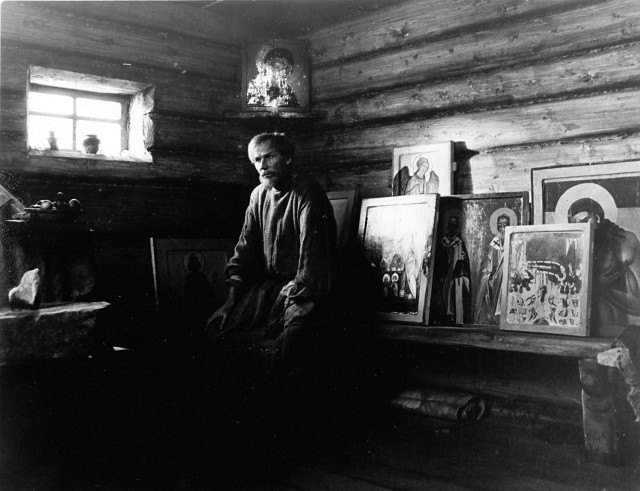
Tarkovsky classic explores the nature of faith and sin and art and creativity as seen through the eyes of several Russian icon painters
The film begins with a seemingly unrelated prologue in which a man named Yefim (Nikolay Glazkov) takes off in a hot-air balloon as the townspeople try to prevent him from flying, as if he is defying God by soaring in the sky. Tarkovsky then spreads out his tale over the course of eight vignettes, some of which feature Rublev (Anatoly Solonitsyn) as a minor character, more of a background observer than the protagonist. A gentle, slow-moving man with a deep contemplation of existence, Rublev, along with his traveling companions and fellow painters Daniil (Nikolai Grinko) and Kirill (Ivan Lapikov), encounters a skomorokh (Rolan Bykov) performing in a barn before being interrupted by the authorities; meets up with aging master Theophanus the Greek (Nikolai Sergeyev); has a falling-out with Kirill; is joined by a new apprentice, Foma (Mikhail Kononov); comes upon a pagan bacchanalia in the woods; befriends the beautiful holy fool Durochka (Irma Raush, Tarkovsky’s wife at the time); finds himself in the middle of a power struggle between the grand prince and his brother, leading to a brutal Tatar invasion; takes a vow of silence after committing a major sin; and watches as a young boy, Boriska (Nikolai Burlyayev, who played Ivan in Tarkovsky’s feature debut), leads the construction of a church bell in a small town, the ropes surrounding the lifting of the bell referencing the ones that Yefim hung from earlier, each trying to get closer to God in their own way.
At a surprisingly fluid pace despite the film’s length, Tarkovsky and cowriter Andrei Konchalovsky (Runaway Train, Maria’s Lovers) explore such issues as sin, guilt, fear of God, vanity, loyalty, jealousy, poverty, and the search for truth, with Rublev often more of a secondary character or commenter. “People should be reminded that they are human beings, that the Russian people are of one blood and one land. Evil is everywhere around. And there are always those who would sell you for thirty coins,” the cynical Kyrill tells Theophanus as Andrei takes part in a passion procession. “New trials are heaping on the Russian men — Tatars, famine, pestilence. But they keep on working. And carrying their cross humbly. They never despair but resign themselves to their fate, only praying to God to give them strength. Won’t the Most High forgive them their ignorance?” Tarkovsky employs many of the visual leitmotifs first seen in Ivan’s Childhood and used throughout his career, including numerous scenes with horses, water, tree roots, and dense forests, beautifully photographed by Vadim Yusov in black-and-white. Among the many memorable images: Paint spills into a river, Andrei pets a bird under a tree in the wind, and the bell is cast as if rising from the fiery pits of hell. Several moments involve brutal violence and torture, particularly of animals; Tarkovsky defended his treatment of one horse that he pushed down an outdoor staircase and is actually killed onscreen. Color brightens the epilogue of the film as Tarkovsky and Yusov lovingly pan across many of Rublev’s actual icon paintings in a kind of artistic creative epiphany. Twice during the film, a poetic masterpiece that can often be found on lists of the best films ever made, Andrei looks directly at the camera, right at the viewer, as if he can see us, imploring us to take heed of his mission. It is nearly impossible not to follow him.
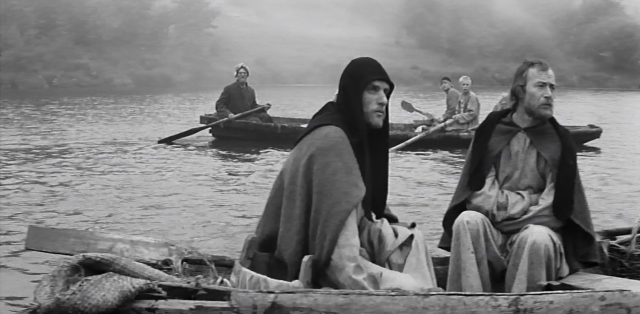
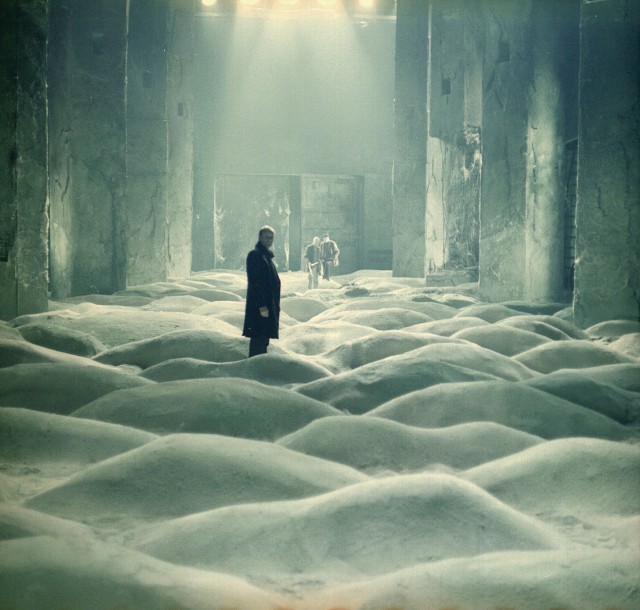
 Set in a seemingly postapocalyptic world that is never explained, Andrei Tarkovsky’s Stalker is an existential work of immense beauty, a deeply philosophical, continually frustrating, and endlessly rewarding journey into nothing less than the heart and soul of the world. Alexander Kaidanovsky stars as Stalker, a careful, precise man who has been hired to lead Writer and Professor (Tarkovsky regulars Anatoli Solonitsyn and Nikolai Grinko, respectively) into the forbidden Zone, a place of mystery that houses a room where it is said that people can achieve their most inner desires. While Stalker’s home and the bar where the men meet are dark, gray, and foreboding, the Zone is filled with lush green fields, trees, and aromatic flowers — as well as abandoned vehicles, strange passageways, and inexplicable sounds. The Zone — which heavily influenced J. J. Abrams’s creation of the island on Lost — has a life all its own as past, present, and future merge in an expansive land where every forward movement is fraught with danger but there is no turning back. An obsessive tyrant of a filmmaker, Tarkovsky imbues every shot with a supreme majesty, taking viewers on an unusual and unforgettable cinematic adventure.
Set in a seemingly postapocalyptic world that is never explained, Andrei Tarkovsky’s Stalker is an existential work of immense beauty, a deeply philosophical, continually frustrating, and endlessly rewarding journey into nothing less than the heart and soul of the world. Alexander Kaidanovsky stars as Stalker, a careful, precise man who has been hired to lead Writer and Professor (Tarkovsky regulars Anatoli Solonitsyn and Nikolai Grinko, respectively) into the forbidden Zone, a place of mystery that houses a room where it is said that people can achieve their most inner desires. While Stalker’s home and the bar where the men meet are dark, gray, and foreboding, the Zone is filled with lush green fields, trees, and aromatic flowers — as well as abandoned vehicles, strange passageways, and inexplicable sounds. The Zone — which heavily influenced J. J. Abrams’s creation of the island on Lost — has a life all its own as past, present, and future merge in an expansive land where every forward movement is fraught with danger but there is no turning back. An obsessive tyrant of a filmmaker, Tarkovsky imbues every shot with a supreme majesty, taking viewers on an unusual and unforgettable cinematic adventure.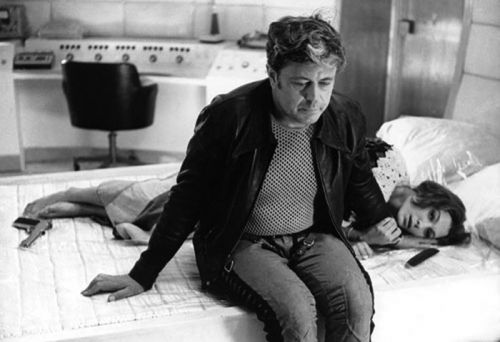
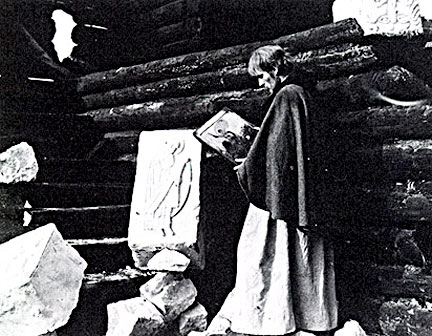
 Andrei Tarkovsky’s marvelous — and very long, at nearly three and a half hours — study of Russian religious painter and monk Andrei Rublev is breathtaking in its epic scope and sublime beauty. Anatoli Solonitsyn stars in this primarily black-and-white tale that has the look and feel of an old classic Russian film from the 1930s (or earlier). It is about faith, about the earth, and about as slow moving as a film can get. The section about the bell is unforgettable. As with several of Tarkovsky’s films, it was cowritten by Andrei Konchalovsky, who made an attempt at Hollywood in the 1980s, churning out such terrible fare as HOMER & EDDIE and TANGO & CASH following a decent start with MARIA’S LOVERS and RUNAWAY TRAIN.
Andrei Tarkovsky’s marvelous — and very long, at nearly three and a half hours — study of Russian religious painter and monk Andrei Rublev is breathtaking in its epic scope and sublime beauty. Anatoli Solonitsyn stars in this primarily black-and-white tale that has the look and feel of an old classic Russian film from the 1930s (or earlier). It is about faith, about the earth, and about as slow moving as a film can get. The section about the bell is unforgettable. As with several of Tarkovsky’s films, it was cowritten by Andrei Konchalovsky, who made an attempt at Hollywood in the 1980s, churning out such terrible fare as HOMER & EDDIE and TANGO & CASH following a decent start with MARIA’S LOVERS and RUNAWAY TRAIN.